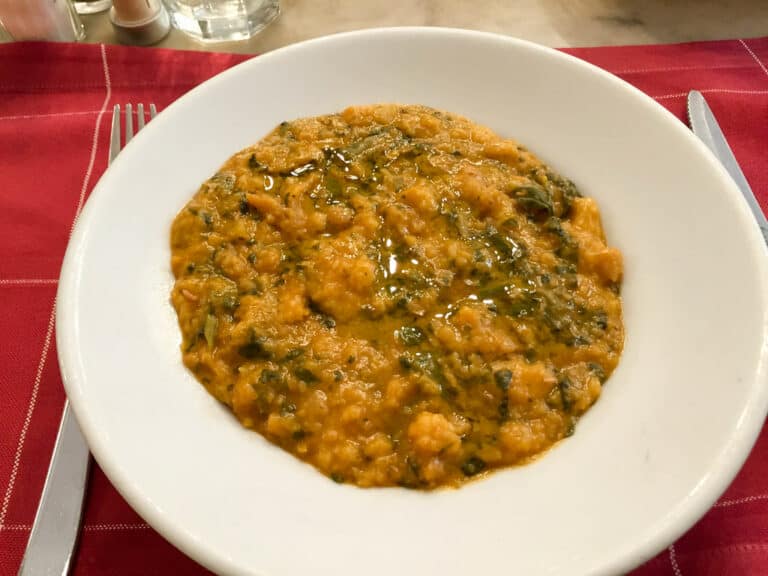Imagine the hills of Tuscany, with its picturesque landscapes and rich culinary history, and you’ll likely find yourself daydreaming about a warm and comforting bowl of ribollita. This classic Tuscan soup, which translates to “reboiled,” has humble origins as a means to use up stale bread, but has since evolved into a beloved staple of Tuscan cuisine. In this blog post, we will explore a ribollita recipe that brings the essence of Tuscany to your kitchen, using key ingredients such as extra virgin olive oil, cannellini beans, and of course, stale bread. So, let’s dive into the world of ribollita and discover the secrets to this hearty and delicious soup.
Ingredients and Variations
A ribollita recipe is characterized by its simplicity and reliance on fresh, seasonal ingredients. At its core, this Tuscan white bean soup consists of the following essential ingredients:
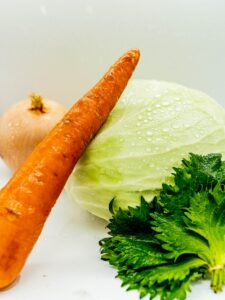
1. Cannellini beans – The star of this bean soup, cannellini beans provide a creamy and satisfying base. While you can use canned cannellini beans for convenience, we’ll discuss the benefits of using dried beans later in this post.
2. Cabbage – Savoy cabbage is a traditional choice for ribollita, but you can also use other varieties depending on availability and personal preference.
3. Tuscan kale (cavolo nero) – This dark, leafy green is another staple in Tuscan cuisine, adding both flavor and nutrients to the soup. If you can’t find Tuscan kale, lacinato kale or Swiss chard make suitable substitutes.
4. Carrots, onions, and celery – These aromatic vegetables form the base of the soup, contributing depth and flavor.
5. Canned tomatoes – Tomatoes add a touch of acidity to the soup, balancing out the other flavors. You can use fresh tomatoes during the summer months when they’re in season, but canned tomatoes are a convenient option year-round.
6. Stale bread – The key to transforming this vegetable soup into a ribollita is the addition of stale bread, which helps to thicken the soup and add texture.
7. Olive oil – A good quality extra virgin olive oil is essential for both cooking the vegetables and drizzling over the finished soup.
8. Garlic – Finely chopped or crushed garlic adds a punch of flavor to the soup.
9. Vegetable or chicken broth – The choice of broth depends on your personal preference and dietary requirements, but a good quality stock is essential for a flavorful soup.
10. Parmesan rind – Adding a Parmesan cheese rind to the soup while it cooks imparts a subtle, savory depth to the dish that is absolutely delicious.
11. Seasonings – Red pepper flakes, kosher salt, and black pepper are used to season the soup to taste, with the option to add fresh basil, thyme, or other herbs for added flavor.
While the above ingredients form the backbone of a classic Tuscan ribollita, there are several variations and optional ingredients that can be incorporated into your recipe:
1. Different types of beans – While cannellini beans are traditional, you can experiment with other white beans, such as Great Northern or navy beans.
2. Adding other vegetables – Feel free to incorporate more vegetables into your ribollita, such as diced potatoes, zucchini, or bell peppers. This is a great way to make use of seasonal produce or clean out your fridge.
3. Meat options – If you prefer a heartier soup, you can add pancetta or sausage to your ribollita for added protein and flavor. Just be sure to adjust the cooking times and methods accordingly.
4. Seasoning variations – Customize your ribollita with your favorite herbs and spices, such as rosemary, sage, or crushed red pepper flakes for some heat.
Preparation and Cooking
Creating a ribollita recipe that rivals those found in the hills of Tuscany requires a bit of time and patience, but the results are well worth the effort. Here’s a step-by-step guide to preparing and cooking your ribollita:
A. Soaking and cooking the beans
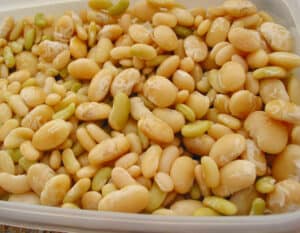
1. Dried versus canned beans – While canned cannellini beans provide a quick and convenient option, using dried beans allows for better control over the texture and flavor of the finished soup. Furthermore, the bean cooking liquid can be reserved and used in place of some of the broth, adding even more flavor to your ribollita.
2. Soaking and cooking dried beans – To prepare dried beans, soak them in cold water overnight or for at least 8 hours. Drain and rinse the beans, then place them in a large pot with enough water to cover them by about 2 inches. Add a bay leaf and bring the water to a boil, then reduce the heat to a simmer and cook the beans until they are tender but not mushy, about 1 to 1.5 hours. Be sure to reserve the bean cooking liquid for use later in the recipe.
B. Preparing the vegetables
1. Chopping and dicing – Begin by finely chopping the onions, carrots, and celery, and mincing the garlic. Thinly slice the cabbage and Tuscan kale, removing any tough stems.
2. Sautéing the vegetables – Heat a generous amount of extra virgin olive oil in a large Dutch oven or soup pot over medium heat. Add the onions, carrots, and celery, and cook, stirring occasionally, until the vegetables are softened and golden brown, about 10-15 minutes. Add the garlic and cook for an additional minute, or until fragrant.
C. Simmering the soup
1. Adding the broth and beans – Once the vegetables are cooked, add the canned tomatoes, broth, and cooked beans to the pot. If using dried beans, be sure to include some of the reserved bean cooking liquid for extra flavor. Add the Parmesan cheese rind and seasonings, such as kosher salt, black pepper, and red pepper flakes, to taste.
2. Cooking time and consistency – Bring the soup to a boil, then reduce the heat to a simmer and cook for about 30-40 minutes, allowing the flavors to meld and the vegetables to become tender. Stir in the thinly sliced kale and cabbage, and continue to cook for another 10-15 minutes, or until the greens are tender.
D. Incorporating the bread
1. Using stale bread – A day-old, crusty bread works best for ribollita, as it helps to thicken the soup without becoming too mushy. Cut or tear the bread into bite-sized pieces, and set aside.
2. Layering or mixing the bread into the soup – There are two methods for incorporating the bread into your ribollita. The first is to simply stir the bread directly into the soup, allowing it to absorb the liquid and thicken the soup as it cooks. The second method is to create layers of bread and soup in a separate pot or Dutch oven, beginning with a layer of bread, followed by a layer of soup, and repeating until all the bread and soup have been used. Allow the layered ribollita to sit for at least 30 minutes, or until the bread has absorbed the liquid, before serving.
E. Finishing touches
1. Adding final seasonings – Taste the soup and adjust the seasonings as needed, adding more kosher salt, black pepper, or crushed red pepper flakes to your liking. If desired, stir in some chopped fresh basil or other herbs for added flavor.
2. Drizzling with olive oil – Before serving, remove and discard the Parmesan rind. Ladle the ribollita into bowls and drizzle with a generous amount of extra virgin olive oil for added richness and flavor.
3. Serving suggestions – Enjoy your ribollita with a glass of Tuscan red wine and some additional crusty bread on the side. For a truly authentic experience, serve your ribollita on a slice of toasted Tuscan bread, rubbed with garlic and drizzled with olive oil.
Tips for Perfect Ribollita
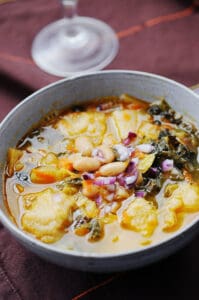
Creating a ribollita recipe that captures the essence of Tuscany is all about using the right ingredients and techniques. Here are some tips to ensure your ribollita turns out absolutely delicious every time:
1. Choosing the right ingredients – Opt for fresh, seasonal vegetables and a high-quality extra virgin olive oil to ensure the best possible flavor in your ribollita.
2. Adjusting the thickness – Ribollita can be served as a thick, bread soup or a thinner,more brothy soup, depending on your preference. To achieve your desired consistency, simply adjust the amount of broth and bread used in the recipe. For a thicker soup, use less broth and more bread, and vice versa for a thinner soup.
3. Making ribollita in advance – Like many soups and stews, ribollita only gets better with time. The flavors meld and deepen as the soup sits, making it a perfect dish to prepare ahead of time. Simply allow the soup to cool, then refrigerate for up to three days before reheating and serving. If the soup thickens too much during storage, simply add more broth or bean cooking liquid to reach the desired consistency.
4. Using leftovers creatively – Leftover soup can be transformed into a new and delicious meal by adding cooked pasta, rice, or grains to the mix. Alternatively, you can serve the ribollita atop a bed of sautéed greens or roasted vegetables for a hearty, meatless dinner option.
Exploring the Versatility of Tuscan Cuisine Beyond Ribollita
While ribollita holds a cherished place in Tuscan cuisine, the region’s culinary delights extend far beyond this hearty bean stew. Tuscan cuisine is a treasure trove of flavors and traditions, and we’re here to introduce you to a few more delightful dishes that showcase the region’s culinary prowess. Let’s take a culinary journey through Tuscany and discover what makes this region’s recipes easy, healthy, and top choices for food enthusiasts.
1. Tuscan Spinach and Cannellini Bean Stew
One top Tuscan recipe that’s gaining popularity for its ease of preparation and healthy ingredients is the Tuscan Spinach and Cannellini Bean Stew. This dish combines the creaminess of cannellini beans with the freshness of spinach, creating a nutritious and flavorful stew that’s ready in under 30 minutes.
2. Tuscan Tomato and Bread Soup
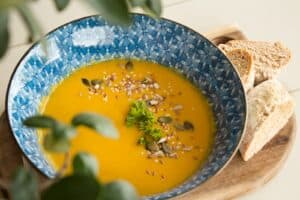
If you’re looking for a recipe that’s both easy and a delicious way to use stale bread, Tuscan Tomato and Bread Soup is a must-try. This simple yet satisfying dish can be prepared in under an hour, making it a quick weeknight dinner option. Plus, it’s a healthy choice that incorporates tomatoes for a burst of flavor.
3. Tuscan Vegetable Medley
For a recipe that’s as easy as it is healthy, look no further than the Tuscan Vegetable Medley. This dish features a colorful array of seasonal vegetables like zucchini, bell peppers, and carrots, cooked to perfection with aromatic Tuscan herbs. It’s a top choice for those seeking a light and nutritious meal that’s ready in a flash.
4. Tuscan-inspired Spinach and Cheese Stuffed Chicken Breast
Elevate your dinner game with a Tuscan-inspired Spinach and Cheese Stuffed Chicken Breast recipe. This dish combines the flavors of Tuscany with a twist, stuffing tender chicken breasts with a mixture of spinach and cheese. It’s a top pick for a special occasion dinner that’s surprisingly easy to prepare and impressively healthy.
5. Tuscan-Inspired Sausage and Bean Casserole
If you’re in the mood for something heartier, consider trying a Tuscan-Inspired Sausage and Bean Casserole. This stew-like dish combines the richness of sausage with the creaminess of cannellini beans, creating a flavorful and filling meal. It’s an easy recipe that can be prepared in under an hour, making it perfect for busy weeknights.
6. Tuscan-Inspired White Bean Salad
For a healthy and easy recipe that’s perfect as a side dish or a light lunch, try the Tuscan-Inspired White Bean Salad. This dish features cannellini beans paired with fresh Tuscan flavors like extra virgin olive oil and rosemary. It’s a top choice for those looking to save time while enjoying a nutritious meal.
7. Tuscan-Inspired Herb Roasted Potatoes
Tuscan cuisine is renowned for its use of fresh herbs, and one way to incorporate these flavors into your meals is by making Tuscan-Inspired Herb Roasted Potatoes. This easy recipe allows you to top potatoes with a medley of aromatic herbs like rosemary and thyme, creating a side dish that’s both healthy and bursting with flavor.
8. Tuscan Quinoa Salad
For a modern twist on Tuscan cuisine, consider making a Tuscan Quinoa Salad. This healthy and easy recipe combines quinoa with Tuscan-inspired ingredients like sun-dried tomatoes, olives, and fresh basil. It’s a top choice for a light and satisfying meal that’s ready in minutes.
Final Thoughts: Classic Ribollita Recipe
This ribollita recipe, steeped in Tuscan culinary tradition, is a testament to the beauty and versatility of simple, seasonal ingredients. With its comforting blend of cannellini beans, kale, cabbage, and stale bread, this classic Tuscan soup is both nourishing and satisfying. By following the tips and techniques outlined in this post, you can easily create a ribollita that rivals those found in the hills of Tuscany, all from the comfort of your own kitchen.
So, gather your ingredients, pour yourself a glass of wine, and embark on a culinary journey through Tuscany with this fabulous ribollita recipe. And don’t forget to share your own ribollita experiences and variations in the comments below – we’d love to hear how you’ve made this classic Tuscan soup your own.
Buon appetito!
For other hearty recipes:

